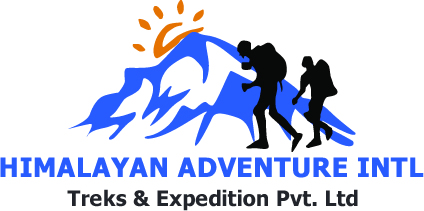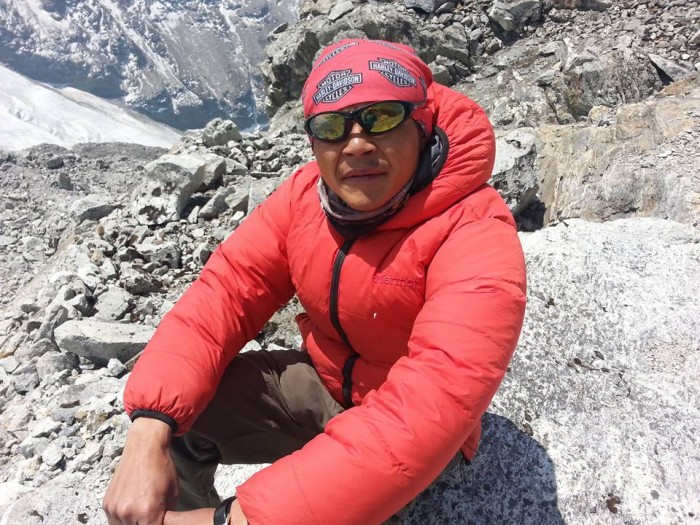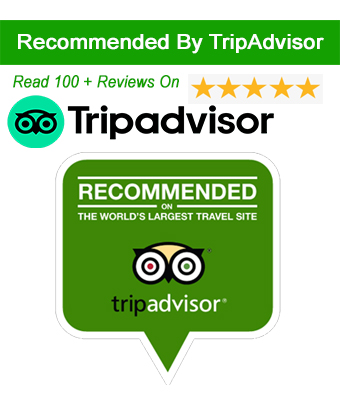Hidden behind the towering Annapurna and Manaslu ranges lies the untouched paradise of Nar Phu Valley Nepal—a remote region rich in Tibetan culture, high cliffs, yak pastures, ancient monasteries, and dramatic mountain vistas. The Nar Phu Valley Trek Nepal is a spectacular journey through isolated villages, high mountain passes like Kang La Pass, and medieval landscapes that few travelers have witnessed.
This guide by Himalayan Adventure International Treks provides a detailed breakdown of the Nar Phu Valley Trek cost, itinerary, permits, difficulty, and FAQs including options for group treks and the possibility of doing the Nar Phu Valley Trek without a guide.
Highlights
-
Explore two hidden valleys: Nar and Phu
-
Cross the stunning Kang La Pass (5,306m)
-
Discover ancient Tibetan Buddhist monasteries
-
Authentic Tibetan-influenced culture
-
Less crowded alternative to Annapurna Circuit
-
Scenic views of Annapurna II, Himlung, and Pisang Peak
-
Opportunity for a Nar Phu Valley short trek or extended version with Annapurna Circuit
Nar Phu Valley Trek Map
(Insert actual image or visual map on webpage)
The Nar Phu Valley trek map starts from Koto, branches off from the Annapurna Circuit, and loops through Phu, Nar, and over Kang La Pass to reconnect with the Annapurna Circuit at Ngawal or Manang.
This unique trail ensures spectacular Himalayan views, cultural immersion, and off-the-beaten-path adventure.
Nar Phu Valley Trek Itinerary – 13 Days
The most popular and balanced version is the Nar Phu Valley Trek 13 days itinerary. Here's the day-by-day breakdown:
🗓️ Nar Phu Valley Trek Itinerary (13 Days)
| Day |
Route |
Altitude (m) |
Duration |
| 1 |
Drive Kathmandu to Koto via Besisahar |
2,600m |
8-9 hrs |
| 2 |
Trek to Meta |
3,560m |
6-7 hrs |
| 3 |
Trek to Phu Village |
4,080m |
7 hrs |
| 4 |
Acclimatization day in Phu – explore Tashi Lhakhang Monastery |
4,080m |
- |
| 5 |
Trek to Nar Phedi |
3,490m |
6 hrs |
| 6 |
Trek to Nar Village |
4,110m |
2-3 hrs |
| 7 |
Trek to Ngawal via Kang La Pass (5,306m) |
3,660m |
8-9 hrs |
| 8 |
Trek to Manang |
3,540m |
4-5 hrs |
| 9 |
Drive or Trek to Chame |
2,670m |
5 hrs |
| 10 |
Drive to Kathmandu |
1,300m |
7-8 hrs |
This standard Nar Phu trek itinerary can be customized to include Tilicho Lake or extended into the Annapurna Circuit.
For those with less time, Nar Phu Valley short trek options are available, such as Nar Phu Valley Trek 7 Days, which focuses only on Phu and skips the Kang La Pass crossing.
Nar Phu Valley Trek Permit & Costs
Since the region is classified as a restricted area by the Government of Nepal, special permits are required. Here’s what you need:
🛂 Nar Phu Valley Trek Permit Details
| Permit Type |
Cost (USD) |
Required For |
| Nar Phu Valley Restricted Area Permit (RAP) |
$100 per person (for 7 days, Sep-Nov) or $75 (Dec-Aug) |
Phu and Nar areas |
| Annapurna Conservation Area Permit (ACAP) |
NPR 3,000 (~$25) |
Entire region |
| TIMS (Trekkers Information Management System) – Not Required for Restricted Areas |
Not needed |
- |
Important: You must trek with a licensed agency like Himalayan Adventure International Treks and hire at least a guide to get the RAP. Independent trekkers cannot apply for RAP.
Nar Phu Valley Trek Cost Breakdown
The Nar Phu Valley Trek cost depends on the length, group size, services, and level of luxury. Here's a general estimate for the Nar Phu Valley Trek 13 days:
💰 Average Cost (Per Person in USD)
| Item |
Cost |
| Transportation (Kathmandu – Koto – Return) |
$150 |
| Accommodation (Teahouses, 12 nights) |
$180 |
| Meals (3 meals/day) |
$250 |
| Restricted Area Permit (RAP) |
$100 |
| ACAP Permit |
$25 |
| Guide (compulsory) |
$250 |
| Porter (optional) |
$150 |
| Agency service fee & logistics |
$100 |
| Total Approx. |
$1,200 – $1,400 |
Group sizes reduce cost per person, so we also offer Group join Nar Phu Valley Trek Cost Annapurna Circuit with shared guide/porter options.
📄 Downloadable Cost Details
We also provide a Group join Nar Phu Valley Trek Cost PDF—request via our booking form or email.
Can You Do Nar Phu Valley Trek Without a Guide?
No, Nar Phu Valley Trek without a guide is not allowed due to its restricted area status. You must:
-
Be in a group of at least two people
-
Hire a licensed trekking guide
-
Apply for permits through an authorized trekking agency (like us)
However, if you are a solo trekker, we can match you with other trekkers in our Group Join Nar Phu Valley Tour Nepal for fixed departures.
Nar Phu Valley Trek Difficulty
The Nar Phu Valley Trek difficulty is rated moderate to challenging due to:
-
High altitude (above 5,000m at Kang La Pass)
-
Remote terrain with limited facilities
-
Long walking hours (6–8 hrs/day)
However, with proper acclimatization and physical preparation, it is achievable for most fit trekkers. Previous high-altitude experience is helpful but not compulsory.
Group Join Nar Phu Valley Trek Map, Itinerary, Distance & Price
We offer fixed departure Group Nar Phu Valley Tours with the following details:
-
Group Nar Phu Valley Trek Map: Includes shared route and checkpoints
-
Group Nar Phu Valley Trek Itinerary: Matches the 13-day standard plan
-
Group Nar Phu Valley Trek Distance: Approx. 80–100 km
-
Group Nar Phu Valley Trek Price: Starts from $999 per person
This includes guide, permit handling, accommodation, transportation, and group logistic support.
Nar Phu Trek Blog – Insider Tips
-
Bring cash (Nepali Rupees) as there are no ATMs
-
Carry warm clothing – temperatures drop sharply at night
-
Accommodation is basic, but welcoming
-
Foods include dal bhat, noodle soup, Tibetan bread, and yak cheese
-
Nar and Phu villages are authentic and less commercialized than Manang or Jomsom
-
Pack sunscreen and lip balm – UV at high altitude is intense
-
Be prepared for no Wi-Fi or mobile network for multiple days
You can follow our Nar Phu Trek blog series for detailed stories, gear list, and testimonials.
Why Choose Himalayan Adventure International Treks?
✅ Licensed trekking agency
✅ 100% permit processing
✅ Fixed departure dates for 2025/2026
✅ Experienced guides & local knowledge
✅ Customizable treks – short or full circuit
✅ Affordable Group Join Nar Phu Valley Trek Cost packages
✅ 24/7 support for booking and logistics
Nar Phu Valley Short Trek Options
Short on time? Consider these Nar Phu Valley short trek alternatives:
-
Nar Phu Trek 7 Days: Focuses only on Phu and Nar without crossing Kang La Pass
-
Combine with Annapurna Circuit or Tilicho Lake if you have more time
-
Helicopter return options are available on request
Best Time to Trek Nar Phu Valley
-
Autumn (Sep–Nov): Clear skies, perfect views, best weather
-
Spring (Mar–May): Blooming rhododendrons, warmer temperatures
-
Winter & Monsoon: Not recommended due to snow and landslides
Booking Nar Phu Valley Tours for 2025/26
Himalayan Adventure International Treks offers:
-
Private Treks
-
Group Join Treks
-
Custom Packages with add-ons
-
Festival trek to Nar Phu Tashi Lakhang Monastery
-
PDF Itineraries & Route Maps upon request
📧 Email us now or visit our website to get your personalized Nar Phu Valley Trek itinerary, map, and cost plan.
The Nar Phu Valley Trek Nepal is one of the most rewarding, culturally rich, and least crowded trekking routes in the Himalayas. Whether you’re planning a Nar Phu Valley trek 13 days, a Nar Phu Valley short trek, or joining a group Nar Phu Valley tour Nepal, this journey promises an unforgettable adventure off the beaten path.
From Nar Phu Valley Trek permit regulations to route maps, costs, and expert insights, Himalayan Adventure International Treks is your trusted partner for 2025/2026.
📞 Ready to Trek the Hidden Valleys of Nar and Phu?
👉 Contact Himalayan Adventure International Treks
📍 Kathmandu, Nepal
🌐 www.himalayanadventureintl.com
📧 info@himalayanadventureintl.com
📱 WhatsApp/Viber: +977-9803526139

 Plan Your Trip Now
Plan Your Trip Now 


